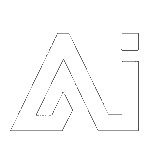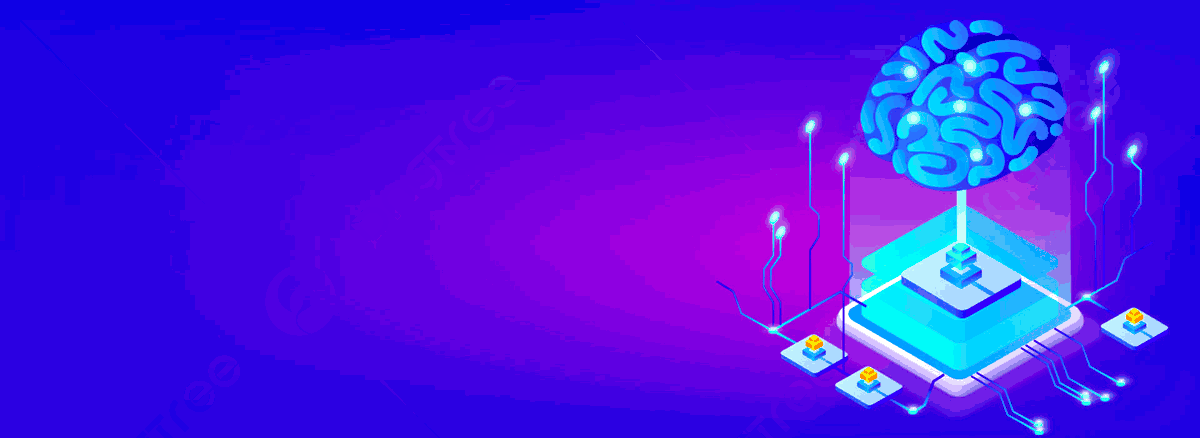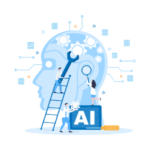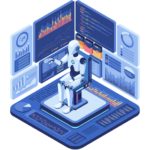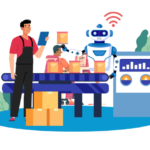 How to Integrate Your SAAS with ChatGPT seamlessly. Transform interactions into engaging conversations that keep your users coming back for more.
How to Integrate Your SAAS with ChatGPT seamlessly. Transform interactions into engaging conversations that keep your users coming back for more.
Incorporating Chat GPT into SAAS platforms can bring numerous benefits, such as improved user experience and operational efficiency. Chatbots have become increasingly common in software applications, and GPT is one of the most advanced AI language models, capable of generating human-like responses.
Chat GPT and its Potential
Chat GPT, or Generative Pre-trained Transformer 3, is a natural language processing model developed by OpenAI. It has gained popularity for its ability to mimic human-like language and generate coherent responses in conversational settings. When integrated into SAAS platforms, Chat GPT can enhance user experience and improve operational efficiency.
One of the key benefits of Chat GPT is its ability to understand and respond to user inputs in natural language. This allows for seamless communication between users and software applications, eliminating the need for complex interfaces and reducing cognitive load. Additionally, Chat GPT can handle multiple languages, making it a useful tool for SAAS platforms with a global user base.
Another advantage of Chat GPT is its adaptability and continuous learning. The model is trained on large amounts of data, allowing it to generate responses that are contextually relevant and diverse. It can also learn from user feedback and adjust its responses accordingly, improving over time.
Integrating Chat GPT into SAAS platforms can also lead to efficiency gains for businesses. Chatbots powered by Chat GPT can handle routine customer inquiries and tasks, freeing up human resources for more complex or strategic work. Additionally, Chat GPT can be used for data analysis and insights, providing valuable information for decision-making.
Choosing the Right GPT Framework for SAAS Integration
When incorporating GPT into SAAS platforms, developers have a range of frameworks to choose from. Each framework has its own set of features, benefits, and drawbacks. Therefore, selecting the right framework is a crucial step towards successful integration.
Two of the most popular frameworks for SAAS and chatbot integration are TensorFlow and PyTorch. TensorFlow is known for its high performance and scalability, while PyTorch is highly flexible and user-friendly. Let’s take a closer look at each framework:
| Framework | Features | Code Example |
|---|---|---|
| TensorFlow | High performance, scalability, strong community support | |
| PyTorch | Flexible, user-friendly, dynamic computational graph | |
These examples illustrate the differences between the two frameworks. While TensorFlow uses a static computational graph, PyTorch allows for dynamic graph creation. TensorFlow is also known for its strong community support, while PyTorch provides a more user-friendly interface.
Other popular frameworks for incorporating GPT into SAAS platforms include Hugging Face and AllenNLP. Hugging Face is particularly well-suited for natural language processing tasks, while AllenNLP offers a range of pre-built models for different tasks, making it a good choice for developers looking to save time and resources.
Ultimately, the choice of GPT framework depends on the specific needs and requirements of the SAAS platform. Developers should consider factors such as performance, flexibility, user-friendliness, and community support when making their decision.
Preparing Your SAAS for Chat GPT Integration
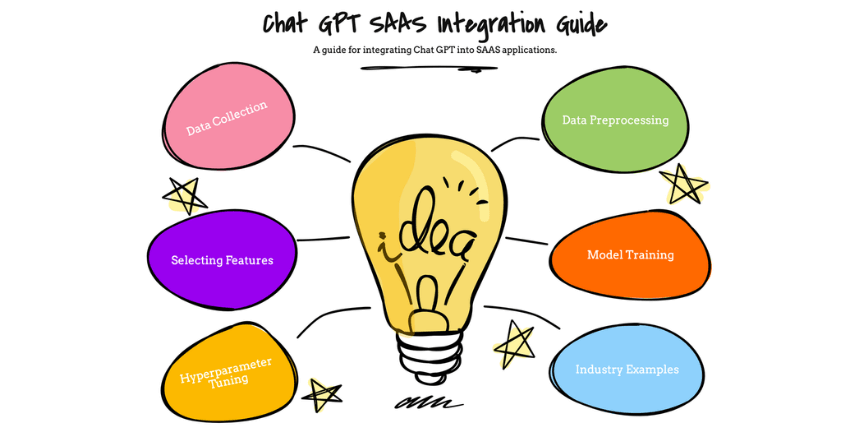
Integrating Chat GPT into SAAS requires careful preparation to ensure the smooth functioning of the software application. This involves addressing various aspects such as data collection, preprocessing, and model training. Let’s explore some best practices and industry examples to guide you through this crucial step.
Data Collection and Preprocessing
When preparing your SAAS for Chat GPT integration, it is essential to collect and preprocess data effectively. This entails identifying the right sources of data and ensuring data quality. One common challenge is dealing with unstructured data such as text, images, and audio. Fortunately, there are several tools and techniques available to tackle this challenge, including natural language processing (NLP) and data annotation platforms.
Another important aspect of data preprocessing is feature extraction. This involves selecting the most relevant features from the collected data to feed into the model. Feature extraction can significantly affect the accuracy and efficiency of the model, and it requires careful consideration.
Model Training
Model training is a critical step in Chat GPT integration, requiring careful planning and execution. The quality and quantity of data used for training significantly impact the performance of the chatbot. Therefore, it is essential to curate a diverse and representative training dataset. One approach is to use transfer learning, where the pre-trained model is fine-tuned on a specific task, reducing the need for large and diverse datasets.
Another factor to consider during model training is selecting the right hyperparameters. These parameters significantly affect the performance of the model, and they need to be fine-tuned to achieve optimal results. Various tools and techniques can be used to automate hyperparameter tuning, such as grid search and Bayesian optimization.
Industry Examples
Several industries have adopted Chat GPT integration, providing examples of best practices and success stories. One example is the financial industry, where chatbots have been used to enhance customer service and streamline operations.
JPMorgan Chase, for instance, implemented a chatbot to assist its institutional clients in trading bonds. The chatbot processed over 150,000 trades in its first year, saving clients time and reducing errors.
Another example is healthcare, where chatbots have been used to provide personalized patient care and improve diagnosis and treatment. Babylon Health, for instance, developed an AI-powered chatbot that provides symptom triage and health advice to its users. The chatbot has been shown to accurately diagnose medical conditions and reduce the workload on healthcare providers.
Implementing Chat GPT in Your SAAS
Integrating Chat GPT with SAAS platforms can bring a new level of value to the overall user experience and the operational efficiency of your software application. In this section, we will delve into the technical aspects of implementing Chat GPT in SAAS platforms to help you leverage its benefits and create a seamless chatbot functionality.
Using APIs for Easy Integration
One of the easiest ways to implement Chat GPT in SAAS platforms is to use APIs offered by the GPT framework you choose. Most popular GPT frameworks support APIs, providing developers with a simple and straightforward way to integrate chatbots into their applications.
For example, the following code uses the GPT-3 API to generate text:
// Import the OpenAI API key
import openai_secret_manager
// Create an API instance
secret = openai_secret_manager.get_secret("openai")
api_key = secret["api_key"]
model_engine = "text-davinci-002"
openai.api_key = api_key
// Use the API to generate text based on input prompt
result = openai.Completion.create(engine=model_engine, prompt=input_prompt, max_tokens=max_tokens)
response = result.choices[0].text.strip()The above code uses the OpenAI API to generate text based on user input, creating a chatbot-like experience for the user. By adapting this code to your application’s needs, you can easily integrate Chat GPT into your SAAS platform.
Integrating Chat GPT into the Backend
Another way to implement Chat GPT in SAAS platforms is to integrate it into the backend of your application. This approach requires more technical expertise, but it offers greater customization and flexibility in terms of implementation. Below is a code example of integrating Chat GPT into a Python-based web application:
// Import the GPT framework
import openai
// Create a function to generate response from user input
def generate_response(input_string):
model_engine = "text-davinci-002"
response = openai.Completion.create(engine=model_engine, prompt=input_string, max_tokens=50)
return response.choices[0].text.strip()
// Create a route for handling user input and generating response
@app.route('/chat', methods=['POST'])
def chat():
input_string = request.form.get('input_string')
response = generate_response(input_string)
return jsonify({'response': response})The above code uses the Flask web framework to handle user input and generate responses based on Chat GPT. By integrating Chat GPT into the backend of your application, you can create a flexible and customized chatbot experience for your users.
Combining Chat GPT with Other AI Technologies
Finally, you can also combine Chat GPT with other AI technologies to create an even more powerful chatbot functionality for your SAAS platform. For example, you can combine Chat GPT with natural language processing (NLP) to create a more responsive and intuitive chatbot experience. Below is a code example of combining Chat GPT with NLP:
// Import the GPT and NLP frameworks
import openai
import nltk
// Create a function to preprocess user input and generate response
def generate_response(input_string):
input_string = nltk.sent_tokenize(input_string)[0]
model_engine = "text-davinci-002"
response = openai.Completion.create(engine=model_engine, prompt=input_string, max_tokens=50)
return response.choices[0].text.strip()
// Create a route for handling user input and generating response
@app.route('/chat', methods=['POST'])
def chat():
input_string = request.form.get('input_string')
response = generate_response(input_string)
return jsonify({'response': response})The above code combines Chat GPT with the NLTK NLP library to preprocess user input and generate responses based on Chat GPT. By combining Chat GPT with other AI technologies, you can create a chatbot experience that is more intuitive and user-friendly.
Considerations for Successful Implementation
When implementing Chat GPT in your SAAS platform, there are several considerations that can help ensure a successful integration:
- Ensure your SAAS platform has the necessary resources and infrastructure to support chatbot functionality, such as sufficient computing power and storage capacity.
- Design your chatbot with the user experience in mind, aiming to provide a seamless and intuitive interaction.
- Consider the scalability of your chatbot, anticipating future growth and demand.
- Test and debug thoroughly, using real-world scenarios and considering edge cases.
By taking these considerations into account, you can help ensure a successful integration of Chat GPT into your SAAS platform, enhancing its capabilities and providing a more valuable user experience.
Monitoring and Improving Chat GPT Performance
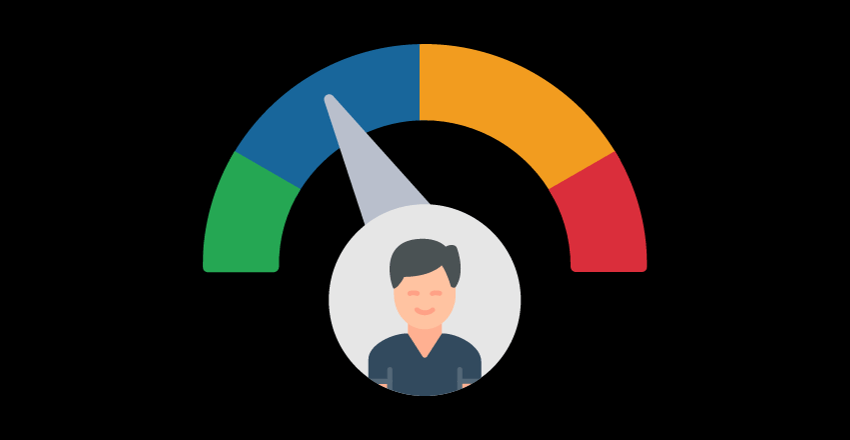
After successful integration of Chat GPT into the SAAS platform, it is crucial to monitor its performance and optimize it for better user experience and operational efficiency. Chat GPT performance can be evaluated using metrics such as response time, accuracy, and engagement rate. These metrics provide insights into the chatbot’s effectiveness in addressing user queries and preferences.
Continuous improvement of Chat GPT performance can be achieved by incorporating user feedback, identifying and addressing common inquiries and pain points, and implementing machine learning techniques. For instance, natural language processing (NLP) algorithms can be used to improve the chatbot’s understanding of user intent and respond appropriately.
Another approach to improving Chat GPT performance is through A/B testing. This involves testing different versions of the chatbot to determine which one performs better. By measuring key metrics, such as conversation length and engagement rate, developers can identify the most effective version and implement it in the SAAS platform.
| GPT Frameworks | Features | Performance | Ease of Implementation |
|---|---|---|---|
| OpenAI GPT-4 | Large-scale language generation, human-like responses, multilingual support | High accuracy, fast response time, good at context-based replies | Requires API access, complex implementation |
| Hugging Face Transformers | Customizable models, easy-to-use API, pre-trained models | Fast response time, good at understanding natural language queries | Straightforward implementation, limited multilingual support |
It is worth noting that different GPT frameworks have varying performance levels and implementation requirements. It is essential to select the most suitable framework based on the SAAS platform’s needs and resources.
Monitoring and improving Chat GPT performance is an ongoing process. It requires developers to stay updated on industry trends, emerging technologies, and user preferences. By continuously optimizing the chatbot’s performance, developers can ensure that it provides an effective and enjoyable user experience, driving business success.
Ensuring Security and Privacy in Chat GPT Integration

When integrating Chat GPT into SAAS platforms, it is crucial to prioritize security and privacy concerns. Users expect their data to be protected, and failure to do so can result in significant consequences for both the users and the SAAS provider.
To ensure security and privacy, SAAS providers should implement encryption techniques to protect user data and prevent unauthorized access. Additionally, SAAS providers should build in mechanisms for user authentication and authorization to ensure that only authorized individuals can access sensitive data.
Another consideration is to provide users with control over their data and the transparency of how their data is being used. SAAS providers should be transparent about the types of data being collected and how it is being used. They should also provide users with the ability to opt-out of data collection if they so choose.
Lastly, SAAS providers must comply with relevant regulations and industry standards. This includes requirements such as GDPR, HIPAA, and PCI DSS, which set strict standards for data handling, protection, and privacy.
Incorporating Chat GPT into SAAS platforms can greatly enhance user experience and operational efficiency, but failure to prioritize security and privacy concerns can have serious consequences. By implementing best practices and complying with relevant regulations, SAAS providers can ensure that their users’ data is protected and secure.
Overcoming Challenges and Common Pitfalls

Integrating Chat GPT into SAAS platforms can present some challenges that must be addressed to ensure a smooth implementation. Some of the most common obstacles include:
- The lack of training data: Chat GPT requires a vast amount of high-quality training data to perform effectively. Without sufficient data, the chatbot may produce irrelevant or incorrect responses.
- The complexity of natural language processing: Chat GPT employs complex natural language processing techniques that can be challenging to implement. Proper preprocessing and model training are crucial for its success.
- The need for ongoing maintenance: Chat GPT requires ongoing monitoring and optimization to ensure its continued effectiveness. Neglecting this can result in poor performance, frustrated users, and wasted resources.
To overcome these challenges, it’s essential to take proactive measures throughout the integration process. Some potential solutions include:
- Collaborating with data scientists to collect and preprocess high-quality training data.
- Working with experienced AI developers who can navigate the complexities of natural language processing.
- Implementing a robust testing and debugging process to catch and fix issues early.
- Monitoring performance metrics and user feedback to identify areas for improvement and implementing continuous enhancements.
It’s also worth keeping in mind that no two integrations are the same. Therefore, it’s essential to be flexible and adaptable throughout the process, addressing challenges as they arise. With careful planning and proactive measures, integrating Chat GPT into SAAS platforms can deliver significant benefits to both users and organizations.
Final Thoughts

Integrating Chat GPT into SAAS platforms offers tremendous benefits to software applications. It provides enhanced user experience, operational efficiency, and advanced capabilities that can differentiate SAAS offerings from competitors.
Choosing the right GPT framework for SAAS integration is essential for success. A thorough understanding of Chat GPT and its potential, along with the necessary preparations, testing, monitoring, and debugging, will ensure a smooth integration process.
Security and privacy are critical considerations when integrating Chat GPT into SAAS platforms. Compliance with industry standards and regulations is necessary to safeguard user data.
Overcoming challenges and common pitfalls requires proactive measures and practical solutions. Real-world examples and industry insights shared in this article can serve as a guide for readers.
External Resources
https://chat.openai.com/
https://openai.com/gpt-4
FAQ

FAQ 1: How do I start integrating Chat GPT into my SaaS for customer support?
Answer: Integrating Chat GPT for customer support involves setting up an API call to OpenAI’s GPT model. This enables your system to send user queries to GPT and receive responses in real time. Here’s a basic Python example using OpenAI’s openai library to send a prompt to Chat GPT and get a response:
import openai
openai.api_key = 'your-openai-api-key-here'
def get_chat_response(query):
response = openai.Completion.create(
engine="text-davinci-003",
prompt=query,
temperature=0.7,
max_tokens=150,
top_p=1.0,
frequency_penalty=0.0,
presence_penalty=0.0
)
return response.choices[0].text.strip()
# Example usage
user_query = "How can I reset my password?"
print(get_chat_response(user_query))This function sends a user’s query to Chat GPT and returns the model’s response. Replace 'your-openai-api-key-here' with your actual OpenAI API key. This setup can be integrated into your SaaS platform’s customer support chat system, providing instant, AI-driven responses to common queries.
FAQ 2: Can I personalize Chat GPT responses for each user in my SaaS application?
Answer: Yes, personalizing Chat GPT responses can greatly enhance user experience by making interactions feel more relevant and engaging. You can achieve this by including user-specific information in the prompt sent to Chat GPT.
Here’s how you could modify the previous example to incorporate personalization:
def get_personalized_chat_response(user_name, query):
personalized_prompt = f"Respond to {user_name}, a user of our platform, asking: '{query}'"
response = openai.Completion.create(
engine="text-davinci-003",
prompt=personalized_prompt,
temperature=0.7,
max_tokens=150,
top_p=1.0,
frequency_penalty=0.0,
presence_penalty=0.0
)
return response.choices[0].text.strip()
# Example usage
user_name = "Alex"
user_query = "What features do I have access to?"
print(get_personalized_chat_response(user_name, user_query))By including the user’s name and potentially other relevant information in the prompt, Chat GPT can generate responses that feel more tailored to each individual user.
FAQ 3: How do I ensure the privacy and security of user data when integrating Chat GPT into my SaaS?
Answer: Ensuring user data privacy and security is crucial, especially when interacting with third-party APIs like OpenAI’s GPT. It’s important to anonymize user data before sending it to the API and to comply with all relevant data protection regulations. Here’s a guideline:
- Anonymize User Data: Before sending any data to OpenAI, ensure that all personally identifiable information (PII) is removed or anonymized.
- Use Secure Connections: Always use HTTPS to encrypt data in transit to and from the OpenAI API.
- Compliance with Regulations: Ensure your use of Chat GPT complies with GDPR, CCPA, or any other relevant data protection laws.
While specific code for these operations depends on your application’s architecture, here’s a general approach for anonymizing a user query:
def anonymize_query(query):
# Example anonymization process
anonymized_query = query.replace(user_name, "<user>").replace(other_sensitive_info, "<info>")
return anonymized_query
# Before sending the query
anonymized_query = anonymize_query(user_query)
response = get_chat_response(anonymized_query)This simple example shows how you might start to anonymize data by replacing names and sensitive information with placeholders before sending queries to Chat GPT.
Jane Watson is a seasoned expert in AI development and a prominent author for the “Hire AI Developer” blog. With over a decade of experience in the field, Jane has established herself as a leading authority in AI app and website development, as well as AI backend integrations. Her expertise extends to managing dedicated development teams, including AI developers, Machine Learning (ML) specialists, and other supporting roles such as QA and product managers. Jane’s primary focus is on providing professional and experienced English-speaking AI developers to companies in the USA, Canada, and the UK.
Jane’s journey with AI began during her time at Duke University, where she pursued her studies in computer science. Her passion for AI grew exponentially as she delved into the intricacies of the subject. Over the years, she honed her skills and gained invaluable experience working with renowned companies such as Activision and the NSA. These experiences allowed her to master the art of integrating existing systems with AI APIs, solidifying her reputation as a versatile and resourceful AI professional.
Currently residing in the vibrant city of Los Angeles, Jane finds solace in her role as an author and developer. Outside of her professional pursuits, she cherishes the time spent with her two daughters, exploring the beautiful hills surrounding the city. Jane’s dedication to the advancement of AI technology, combined with her wealth of knowledge and experience, makes her an invaluable asset to the “Hire AI Developer” team and a trusted resource for readers seeking insights into the world of AI.
